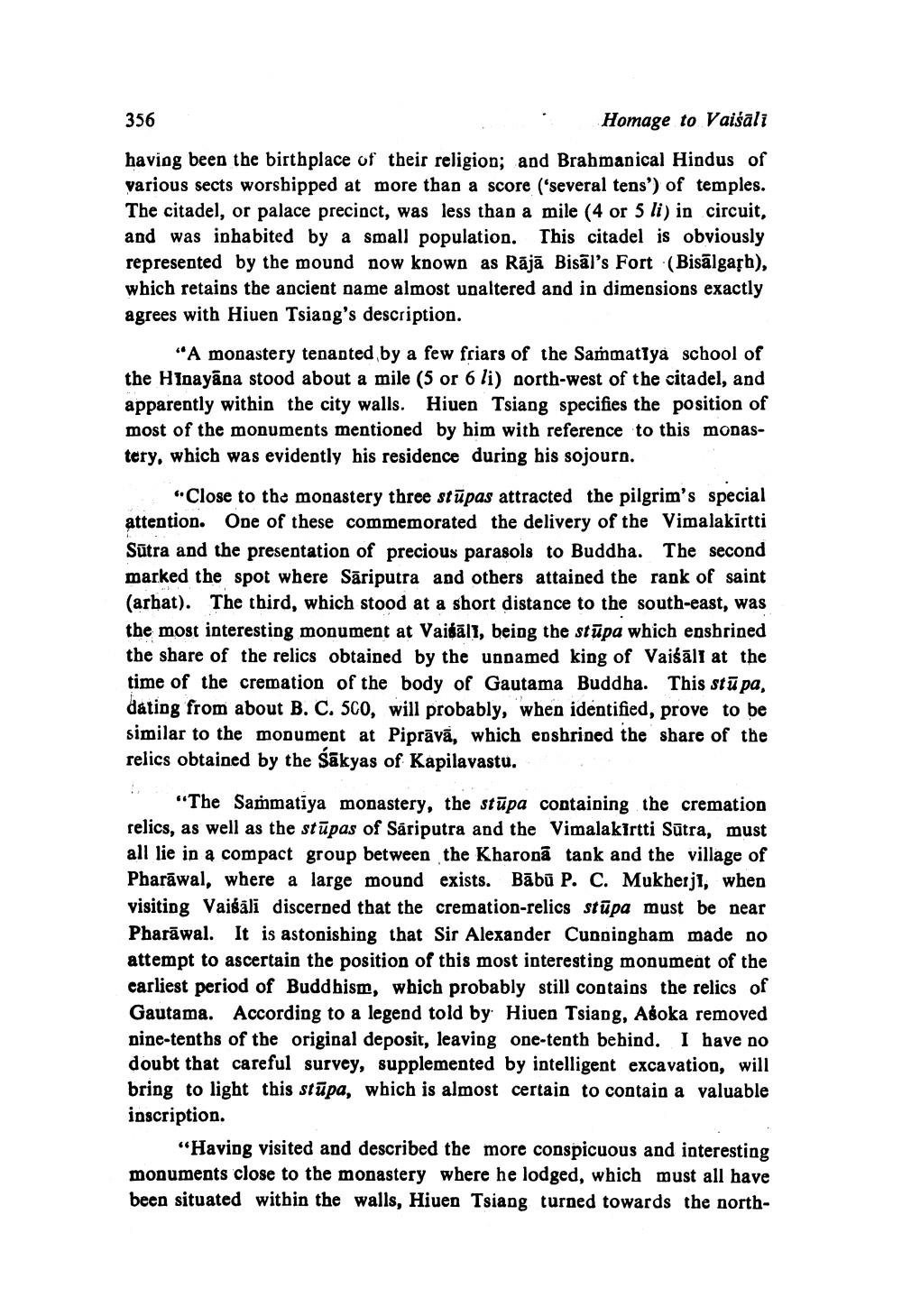________________ 356 Homage to Vaisali haviog been the birthplace of their religion; and Brahmanical Hindus of various sects worshipped at more than a score ('several tens') of temples. The citadel, or palace precinct, was less than a mile (4 or 5 li) in circuit, and was inhabited by a small population. This citadel is obviously represented by the mound now known as Raja Bisal's Fort (Bisalgash), which retains the ancient name almost unaltered and in dimensions exactly agrees with Hiuen Tsiang's description. "A monastery tenanted by a few friars of the Sammatiya school of the Hinayana stood about a mile (5 or 6 li) north-west of the citadel, and apparently within the city walls. Hiuen Tsiang specifies the position of most of the monuments mentioned by him with reference to this monastery, which was evidently his residence during his sojourn. Close to the monastery three stupas attracted the pilgrim's special attention. One of these commemorated the delivery of the Vimalakirtti Sutra and the presentation of precious parasols to Buddha. The second marked the spot where Sariputra and others attained the rank of saint (arbat). The third, which stood at a short distance to the south-east, was the most interesting monument at Vaisali, being the stupa which enshrined the share of the relics obtained by the unnamed king of Vaisali at the time of the cremation of the body of Gautama Buddha. This stupa, dating from about B. C. 500, will probably, when identified, prove to be similar to the monument at Piprava, which enshrined the share of the relics obtained by the Sakyas of Kapilavastu. "The Sammatiya monastery, the stupa containing the cremation relics, as well as the stupas of Sariputra and the Vimalakirtti Sutra, must all lie in a compact group between the Kharona tank and the village of Pharawal, where a large mound exists. Babu P. C. Mukherji, when visiting Vaisali discerned that the cremation-relics stupa must be near Pharawal. It is astonishing that Sir Alexander Cunningham made no attempt to ascertain the position of this most interesting monument of the carliest period of Buddhism, which probably still contains the relics of Gautama. According to a legend told by Hiuen Tsiang, Asoka removed nine-tenths of the original deposit, leaving one-tenth behind. I have no doubt that careful survey, supplemented by intelligent excavation, will bring to light this stupa, which is almost certain to contain a valuable inscription. "Having visited and described the more conspicuous and interesting monuments close to the monastery where he lodged, which must all have been situated within the walls, Hiuen Tsiang turned towards the north




